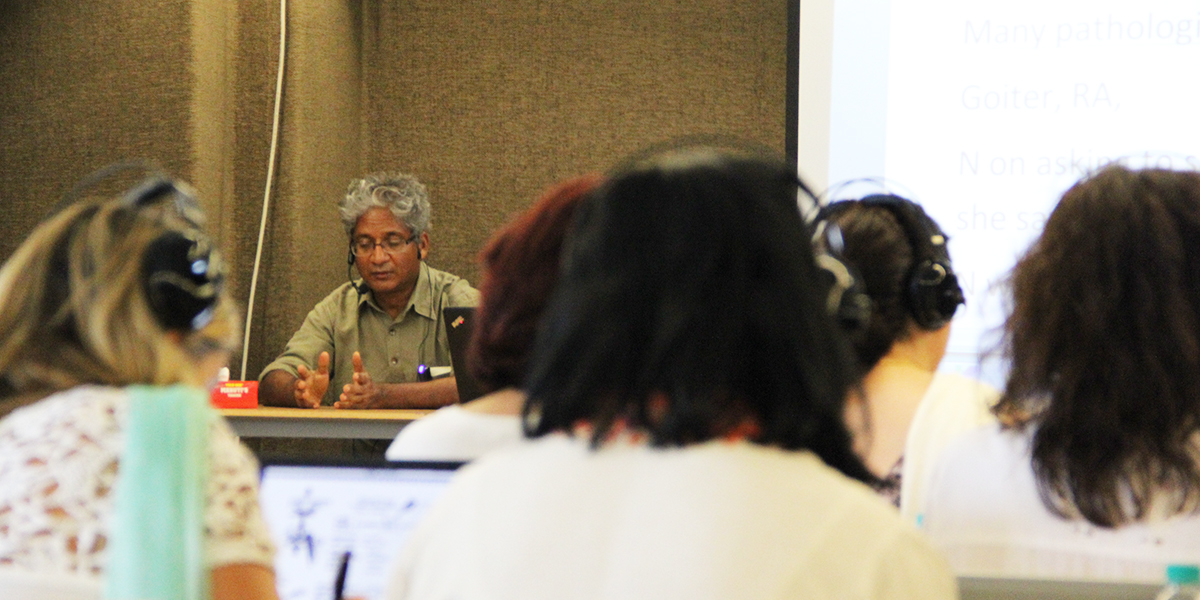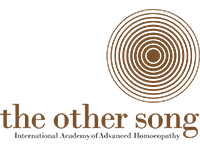
Bridging the gap between theory and practice is one of the basic tenets of the academic program at the other song academy. Formal education is deeply lacking in extensive practical clinical training for students, which in turn affects their ability to set up and start a successful practice on their own.
Teaching and training at the academy is geared towards the all-round development of students and practitioners. The learning model adopted by the program includes the following aspects:
Homoeopathy is best learned when a student is exposed to an experienced practitioner in practice, and observes the art of case-taking, understanding the totality, and the process of determining a remedy. The academy provides this unique platform where video technology connects the clinic consulting rooms to the training auditoriums. Students witness live cases and follow-ups on a daily basis as part of their training program, followed by an in-depth discussion and analysis of the case with experienced homoeopaths. This helps the trainee to connect seamlessly to the theory being applied to daily practice.
Students have direct access to the senior practitioners whom they witness live in the consulting room. They have the opportunity to engage in discussions and in-depth cases analysis with the practitioner, who explains the process of case-taking and remedy selection of each individual case witnessed by students.
Since the academic faculty at the other song comprises of several internationally-acclaimed homoeopaths, students are exposed to different styles and approaches of practicing Homoeopathy.
The senior mentors help to model skills like acute observation, active listening, thoughtful discussion, and heightened self awareness, which are essential to learning the art of homoeopathic practice as taught at the academy.
At the academy, some students avail of the opportunity of hands-on clinical training through either supervised case-taking or assisting the in-house resident doctors during the case receiving and analysis sessions (CRA). Some batches of students are supported by extensive tutorial sessions after the lectures. The participants are split into smaller groups and each group has a mentor with them throughout their learning experience.
The academy has a team of full-time trained homoeopaths on the premises, including some very experienced practitioners. These homoeopaths are available to help and guide students at any given time.
Interactive learning and teaching
At the academy, some students avail of the opportunity of hands-on clinical training through either supervised case-taking or assisting the in-house resident doctors during the case receiving and analysis sessions (CRA). Some batches of students are supported by extensive tutorial sessions after the lectures. The participants are split into smaller groups and each group has a mentor with them throughout their learning experience.
There is a huge library of archived video cases, which are readily available for reference. These cases can be easily drawn upon to illustrate the different aspects of the training program.
The number of participants in each training group does not exceed 60 students, thereby facilitating greater inter-personal, and one-on-one discussions in the classroom and with faculty members.
For students in few advanced courses, the students are placed in an allopathic facility in groups, where training is given on bedside manner, clinical training, and differential diagnosis.
Indian students get the opportunity to win a scholarship for future courses at the academy. This scholarship is named after Dr. Sankaran’s late mother, Mrs. Kamala Sankaran.
This learning model enables students and practitioners to gain knowledge and experience in the following aspects of advanced homoeopathic practice:
- How to approach each individual case – since different patients require different approaches
- How to understand symptoms in their totality
- How to understand the thought process behind every question
- How to differentiate between common and characteristic symptoms
- How to convert characteristic symptoms into rubrics
- How to arrive at a remedy
- How to select the right potency
- How to undertake long term management
- This opportunity is especially beneficial for international students who can take the opportunity of readily available clinical set up managed by team of in house consultants and residents.
- Can we think of an alternate word?
- This should go in the international section
Homoeopathy is best learned when a student is exposed to an experienced practitioner in practice, and observes the art of case-taking, understanding the totality, and the process of determining a remedy. The academy provides this unique platform where video technology connects the clinic consulting rooms to the training auditoriums. Students witness live cases and follow-ups on a daily basis as part of their training program, followed by an in-depth discussion and analysis of the case with experienced homoeopaths. This helps the trainee to connect seamlessly to the theory being applied to daily practice.
Students have direct access to the senior practitioners whom they witness live in the consulting room. They have the opportunity to engage in discussions and in-depth cases analysis with the practitioner, who explains the process of case-taking and remedy selection of each individual case witnessed by students.
Since the academic faculty at the other song comprises of several internationally-acclaimed homoeopaths, students are exposed to different styles and approaches of practicing Homoeopathy.
The senior mentors help to model skills like acute observation, active listening, thoughtful discussion, and heightened self-awareness, which are essential to learning the art of homoeopathic practice as taught at the academy.
At the academy, some students avail of the opportunity of hands-on clinical training through either supervised case-taking or assisting the in-house resident doctors during the case receiving and analysis sessions (CRA). Some batches of students are supported by extensive tutorial sessions after the lectures. The participants are split into smaller groups and each group has a mentor with them throughout their learning experience.
The academy has a team of full-time trained homoeopaths on the premises, including some very experienced practitioners. These homoeopaths are available to help and guide students at any given time.
At the academy, there is vibrant interaction between students and the faculty. Among students, this interaction is encouraged and welcomed. One important aspect of the academy is focus on learning through discussion and dialogue.
There is a huge library of archived video cases, which are readily available for reference. These cases can be easily drawn upon to illustrate the different aspects of the training program.
The number of participants in each training group does not exceed 60 students, thereby facilitating greater inter-personal, and one-on-one discussions in the classroom and with faculty members.
HOPE (Homoeopathy online portal for education), now a part of the academy offers variety of online courses. From basic to advanced; diverse approaches from range of highly experienced and skilled teachers. Its an opportunity to learn directly from masters at your doorstep.
